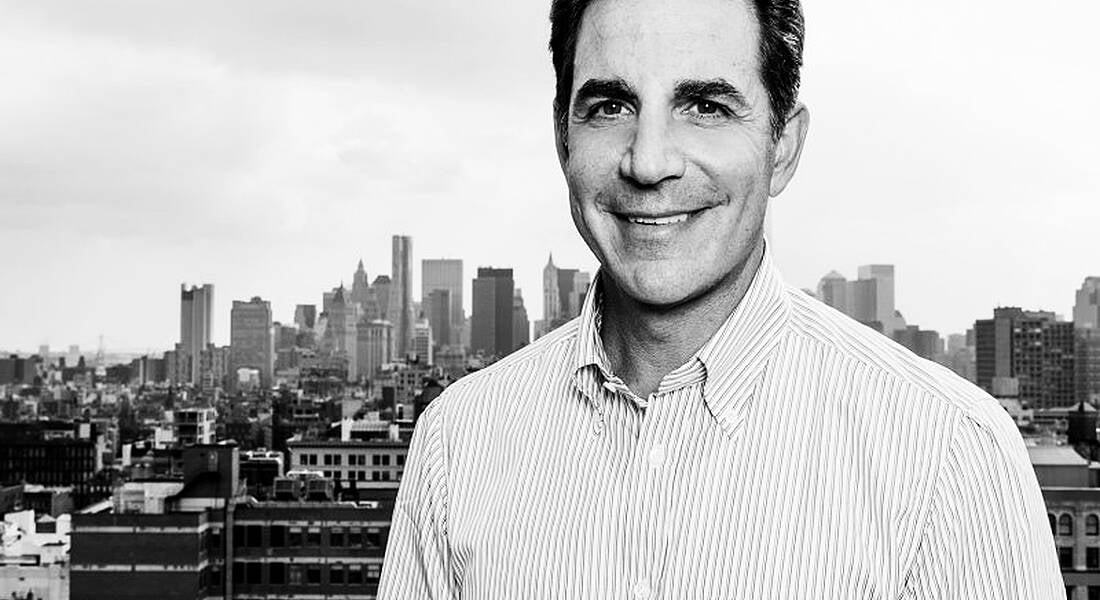AOL’s 170-strong operation in Dublin will be in the vanguard of a major shift in the online and media giant’s transformation of its ad delivery systems over the next 12 months, the CEO of AOL Networks Bob Lord told Siliconrepublic.com.
Lord, who is in Dublin this week to direct the strategy, said the company is shifting to what he describes as a “programmatic” advertising platform that will automate and match inventory across display, mobile, social, TV and video.
“We are endeavouring to build a one-stop-shop for global advertisers whereby major brands like Unilever and Coca-Cola can come to us directly to find their audience.
“The lynchpin is a system that allows us to work with the brands, the agencies and the publishers themselves to achieve pinpoint accuracy and return on investment.
“The magic comes in the ability of the new system to learn user behaviour and will involve a set of algorithms that matches audiences with inventory.”
Lord said the system will learn from a placement of a digital ad and will optimise this on an ongoing basis. “The smarter the brain the more effective the placement.”
Format ads are far from dead
Lord said AOL has become effective at serving ads that are contextually relevant to the user. “If a person is reading about mortgages they are more likely to transact with ads that match those stories. That’s basic. But what we are doing is moving to serving ads based on ad experience. HTML5 lets us do anything we want. We’ll have a whole organisation dedicated to premium formats – ‘react, transact’ – that’s the new evolution.”
Interoperability and bridging experiences for users across devices, Lord added, will be crucial, and he believes the future of format advertising is only beginning.
“We are moving the pendulum today to more personalised content on mobile. People will talk about the display advertising business being dead – the only reason for that is nobody has taken it forward and made it more fun. We believe HTML5 will allow us to bridge any previous gaps that may have held display back.”
Lord said that in terms of reporting and analysing the performance of online advertising, particularly display advertising needs to be brought forward by the digital advertising industry as a whole.
“We need to be able to get to the point where we can pinpoint how advertising contributed to actual real sales for brands like Tesco, Mercedes or IKEA. I think HTML5 will bridge that gap. I think we have to set a higher bar for the digital advertising industry.”
Content and context
The three tenets of AOL’s new strategy, Lord said, will be programmatic advertising, video and premium formats.
On the video front, he said AOL wants to set itself apart by curating premium video content into the right channels for advertising partners and at the same time realising the difference between that and user-generated content, such as that seen on YouTube.
“The interesting thing is the premium content had been expensive to do and brands don’t always want to get caught up with or associated with cats on skateboards.
“The answer is somewhere in between. If I am Unilever, for example, I’d want o be associated with curated content and video and we’ve created channels like AOL Sports, AOL Beauty and more to pull together good quality content that brands will want to be associated with.”
He said the plan is also to allow brands like The Huffington Post and TechCrunch to have their own identity. “This is a debate we have all the time. The reality is people move in tribes and associate with things like Huff Post News, Huff Post Life, Engadget or TechCrunch. Our job is not to disrupt these channels if they’re already doing a good job. But certainly we need to mine our data to ensure that we are as effective as we can be.”
The interest graph
AOL is perhaps unique among the born-on-the-internet tech giants of today in that it has actually invested in content properties. That said, Lord believes it is critical in its future approach to work with social networks, like Twitter and Facebook, to deliver the context-based advertising performance its brand customers want.
He said that while there is no plan to ever embark on building a social network like Google did with Google+, platforms its like instant messaging system AIM can yet have a vibrant future.
“My kids hardly use Facebook but they do use Twitter. Kids want instant communication, they want to comment and be transparent about their thoughts. I actually think if someone can ‘re-do’ IM that’s a huge model.
“How we recontextualise AIM is something we will look at. Twitter really is instant messaging also, they had a magic formula that caught on in terms of wide, instant distribution.”
Whatever AOL does, Lord said it will be based on the theme of being open. “We have a definitive strategy that hinges around having the best content. In this world you can’t own everything proprietarily, the best model is to think about human behaviour and serving the tribes they like to move in.”
The strategy involves working with advertising agencies like Publicis in France to help them drive live advertising not only on AOL properties but other third parties, like Twitter.
“The whole industry is currently up in arms over whose job is whose. Our take is to focus on direct sales.”
Dublin in the battle of the brands

Aengus McClean, SVP AOL Advertising Technologies
Aengus McClean, SVP AOL Advertising Technologies and head of the AOL Ireland team, explained that the Dublin operation works across various areas, such as ads, search and content.
“The ad team would be the largest of the groups, and the focus is on creating an engaging experience for our publishers. It is critically important that publishers have an engaged audience.
“Our main focus is on the advertising systems – there is going to be so much to be done over the next 12 months and we’ve really got to deliver and focus on that.”
McClean said that of the 170 workers at AOL Dublin there are 23 nationalities.
“The talent here is fantastic and we draw in a lot of local talent and talent from across Europe and we iterate fluidly with the teams in Germany and the US.”
Addressing a fundamental problem
Lord said one of the main problems AOL is attempting to solve in its new strategy is how to demonstrate and deliver value from programmatic advertising. It works well in the TV world, where a definitive return on investment can be delivered, but in digital this has yet to emerge.
“We are trying to create a similar structure and return for advertisers from the digital space, as they currently enjoy in the TV space.
“To make this happen we will be automating a lot of the manual processes – display, mobile, social and video online – and deliver more efficiency and clarity.
“We’ll be starting with our data strategy and making sure all the data comes together more efficiently.”
McClean said that as the strategy unfolds over the coming 12 months, AOL is likely to increase its headcount not only in Dublin but in Dulles, Virginia, and Baltimore, Maryland.
Lord added that a vital component will be what he calls “cross-device linkage.”
He explained: “The most infuriating thing that can happen to most users today is they get constantly bombarded across the platforms. We’ve come up with a way of knowing it’s the same user across the various screens and delivering our advertising in a more considerate way.
“It’s a revolutionary technology, not a creepy technology, and what it does is ensure that we give users the ads that they are likely to be interested in.”
Lord added that in the last six months, 45pc to 50pc of AOL’s clients have moved to cross-device strategies.
“That means we have to fine-tune our systems to deliver inventory to where users are interacting and what they are most interested in.”




